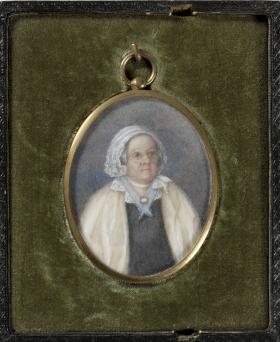The convict experience: Mary Reibey
The making of the modern world from 1750 to 1918. It was a period of industrialisation and rapid change in the ways people lived, worked and through. It was an era of nationalism and imperialism, and the colonisation of Australia was part of the expansion of European power. The period culminated in World War I (1914 - 1918) and World War II (1939 - 1945).
Key inquiry question #1
What were the changing features of the movements of peoples from 1750 to 1918?
Content summary
The experiences of slaves, convicts and free settlers upon departure, their journey abroad, and their reactions on arrival, including the Australian experience (ACDSEH083)
Students:
- select an individual slave sent to the Americas, or a convict or free settler who came to Australia and use sources to contruct the story of their experiences
Changes in the way of life of a group(s) of people who moved to Australia in this period, such as free settlers on the frontier in Australia (ACDSEH084)
Students:
- use a variety of sources to investigate and report on the changing way of life of ONE of the following:
- convicts
- emancipists
- free settlers
Background Notes for Teachers
Mary Haydock was only 13 years old when she was convicted of horse stealing and sentenced to seven years' transportation to New South Wales. Mary dressed as a boy and used the name James Burrow when she committed the crime but at her trial her real gender and identity were discovered. She was 15 years old when she arrived in Sydney in 1792. Mary was assigned as a nursemaid to the household of Major Francis Grose.
In 1794 Mary married Thomas Reibey, a merchant and landholder and they had seven children. After Thomas' death in 1811 Mary became a prosperous businesswoman in her own right with interests in trading vessels and property. She died in 1855, a wealthy and respected member of colonial society. You can see a portrait of Mary in her old age on our twenty dollar note.
Mary was a favourite of Governor Macquarie as he saw her as an example of the value of integrating convicts who had served their sentence back into society. Macquarie's official encouragement of this was called his Emancipist policy.
For more information about the life of Mary Reibey, go to The Australian Dictionary of Biography (online)
Note: Mary's last name has been spelled variously in historical documents as 'Reibey', 'Reiby', and 'Raby'.
Student Activities
Analysing the sources
Students analyse sources on the life of Mary Reibey and conduct their own research.

NSW Syllabus for the Australian Curriculum K - 10
A student:
- HT5-1 explains and assesses the historical forces and factors that shaped the modern world and Australia
- HT5-4 explains and analyses the causes and effects of events and developments in the modern world and Australia
- HT5-6 uses relevant evidence from sources to support historical narratives, explanations and analyses of the modern world and Australia
- HT5-9 applies a range of relevant historical terms and concepts when communicating an understanding of the past
- HT5-10 selects and uses appropriate oral, written, visual and digital forms to communicate effectively about the past for different audiences
Students:
Comprehension: chronology, terms and concepts
- read and understand historical texts
- use historical terms and concepts in appropriate contexts (ACHHS165, ACHHS183)
Analysis and use of sources
- identify different types of sources
- identify the origin, content, context and purpose of primary and secondary sources (ACHHS169, ACHHS187)
- process and synthesise information from a range of sources as evidence in an historical argument (ACHHS170, ACHHS188)
Perspectives and interpretations
- identify and analyse the reasons for different perspectives in a particular historical context (ACHHS172, ACHHS173, ACHHS190, ACHHS191)
Empathetic understanding
- interpret history within the context of the actions, values, attitudes and motives of people in the context of the past (ACHHS172, ACHHS173, ACHHS190, ACHHS191)
Research
- ask and evaluate different kinds of questions about the past to inform an historical inquiry (ACHHS166, ACHHS167, ACHHS184, ACHHS185)
- plan historical research to suit the purpose of an investigation
- identify, locate, select and organise information from a variety of sources, including ICT and other methods (ACHHS168, ACHHS186)
Explanation and communication
- develop historical texts, particularly explanations and historical arguments that use evidence from a range of sources (ACHHS174, ACHHS188, ACHHS192)
- select and use a range of communication forms, such as oral, graphic, written and digital, to communicate effectively about the past for different audiences and different purposes (ACHHS175, ACHHS193)
- Empathetic understanding: the ability to understand another’s point of view, way of life and decisions made in a different period of time or society
- Significance: the importance of an event, development, group or individual and their impact on their times and/or later periods
Learning across the curriculum
- Critical and creative thinking
- Ethical understanding
- Literacy
- Personal and social capability
- Civics and citizenship
- Information and communications technology capability